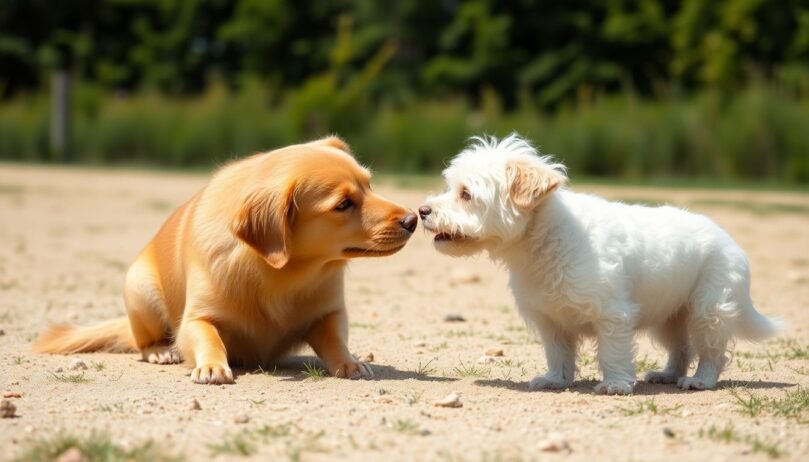How to Introduce Your Dog to a New Pet
- 27 December 2024
- BuyAPet Editorial Team
- All Dogs
How to Introduce Your Dog to a New Pet: A Step‑by‑Step Guide
Bringing home a new pet? Use this calm, step‑by‑step plan to minimise stress, prevent jealousy, and set both animals up for a harmonious life together.
Before the Introduction: Preparation is Key
Assess your dog’s temperament
Consider breed traits, history with other animals, and triggers (e.g., guarding). Tailor your plan to your dog’s needs.
Prepare your home
- Create separate safe spaces for each pet.
- Set a neutral meeting zone (e.g., living room).
- Secure hazards (cleaners, cords, breakables).
Gather essentials
- Duplicate bowls, beds, toys (to reduce resource guarding).
- Baby gates or pens for visual introductions.
- Cloths for scent swapping before meetings.
The Initial Meeting: Controlled Introductions
The first sniff
Start with barriers (gate/crate) so they can see/smell safely. Stay relaxed—your pets read your energy.
Short, supervised sessions
- Keep your dog on a leash; consider a harness for control.
- Use calm, neutral spaces; keep sessions brief and positive.
Read body language
- Watch for stiffness, hard staring, growling, or avoidance.
- Pause and give space at the first sign of rising tension.
Gradual Integration: Build Positive Associations
Supervised play
Start with short sessions and extend as comfort grows. Use parallel play toys to reduce competition.
Mealtimes
Feed at a distance at first; move bowls closer over days as both pets remain calm. Prevent guarding by removing leftovers promptly.
Overnights
Separate sleeping areas initially; increase together time as they relax and show neutral or friendly behaviour.
Addressing Potential Challenges
- Jealousy: Balance attention; reward calm around the newcomer.
- Resource guarding: Provide multiples of high‑value items; train “leave it” and trades.
- Escalating tension: Step back in the plan; seek help from your vet or a qualified trainer.
Maintaining Harmony: Long‑Term Strategies
- Keep a consistent routine (meals, walks, play).
- Supervise until trust is established; continue periodic check‑ins.
- Reinforce friendly behaviour with praise and treats.
FAQs
How long should introductions take?
Anywhere from days to a few weeks. Let behaviour—not the calendar—set the pace.
Should I let them meet off‑leash immediately?
No. Begin with barriers and leashed sessions, then progress to short off‑leash time as they relax.
What if my dog growls at the new pet?
Growls are communication. Pause, add distance, and reset the plan. Avoid punishment; seek pro help if it persists.
Is scent swapping really necessary?
Yes. Exchanging scents beforehand reduces anxiety and makes first meetings smoother.
This article is educational and not a substitute for professional veterinary advice. For persistent issues or medical concerns, consult your veterinarian.
